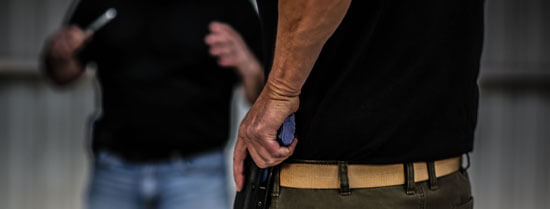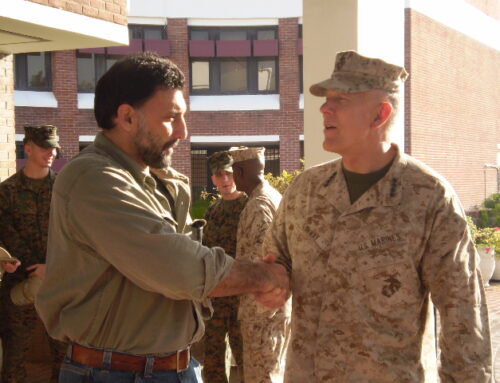If you end up needing to go to guns in a defensive situation, it means that you were caught off guard, pressed back on your heels and behind the action-reaction power curve from the start. What can you do to keep yourself ahead of the curve?
Most card-carrying defensive shooters have a tough time accepting the cold mackerel of reality in the face regarding any violent physical altercation, that the bad guy (BG) is in complete control.
The fight starts before the fight starts. The BG determines exactly where and what time the fight will be, what weapon(s) he/ they will use, who they target and precisely how it will go down. Therefore, BG has the initiative before the altercation even begins.
Prior to, and at the inception of such an altercation, although woefully behind the action-reaction power curve, there are a few tricks of the trade you can use to turn the tables in your favor. The most effective is to make them react to you. You can achieve this critical objective if you buy more time, control your position, and stay mobile.
Buy Time
In the world of executive protection, the most important factor in controlling any active threat engagement is time. Either you the control time, or the time will control you. To control time is to buy yourself more time in a potentially lethal confrontation, but how?
Awareness is the currency that buys you time. Applying your situational awareness to your immediate environment gains you the upper hand by eliminating the element of surprise thus taking valuable time away from the BG. It allows you to hear it, see it and smell it coming.
Taking time away from your adversaries attenuates their effectiveness, acts as a deterrent, and makes you a more difficult target. Bad guys go after the lowest hanging fruit – soft targets. Buying time means that you are aware of your surroundings, including the BGs. It sends a clear message that you are not unaware and most likely trained. It makes them ask the question “Are there softer targets?” and provides the answer “Yes.”
If you notice them noticing you notice them, then that’s a tremendous win as now you can respond by walking across the street creating greater distance which buys you even more time. Bottom line is they get burned and you take control of the time in your battlespace.
Failing to apply your situational awareness means that you have failed to buy yourself time, failed to deter the attack, relinquished any proactive measures, and ended up being rocked back on your heels. Here you have only one remaining and reactive measure – go to guns – where you are forced to react to them utilizing your last and only remaining defensive option while raising your potential for great bodily harm.
Control Position
Failing to apply your awareness and unable to create space or place distance between yourself and your adversaries, you still have another option and that is to change your physical position relative to your threat.
Pulling into a crowded parking lot you hadn’t noticed the three thugs watching you pull in, talking on your cell phone and gathering your belongings in preparing to exit the vehicle.
Exiting the vehicle, locking the doors and approaching the sidewalk, you look up only to see them closing in on you. Although behind the power curve you still have some space and some time to work with here so you say “Hey, I gotta go” end your conversation, shift your attention to your environment and position yourself such that there are obstacles like other vehicles, people, trash cans, and the like between yourself and the potential threat. It directly impacts your attacker(s).
Changing your physical position relative to the threat is a proactive measure that allows you more options to solve the tactical problem.
Failing to change position means that you have failed to provide further options, failed to deter the attack, relinquished any proactive measures, and ended up being rocked back on your heels. Here you have only one remaining and reactive measure – go to guns – where you are forced to react to them utilizing your last and only remaining defensive option while raising your potential for great bodily harm.
Stay Mobile
Worst case scenario you failed to apply your awareness, you failed to change physical position you still have one remaining tactical option – stay mobile. At the last possible moment when you finally notice that they are closing in on you, the most effective active measure you have remaining is to stay mobile.
Which is more difficult to hit with a firearm or even an edged weapon – a stationary target or a moving target? A moving target is always more difficult to hit. Again, BGs seek the most vulnerable targets and with your being in motion means that you are more difficult to pursue.
Failing to stay mobile means that you have provided a soft and stationary target, relinquished any proactive measures, and ended up being rocked back on your heels. Here you have only one remaining and reactive measure – go to guns – where you are forced to react to them utilizing your last and only remaining defensive option while raising your potential for great bodily harm.
Going to guns means you failed to keep ahead of the power curve by failing to make them react to you. Failing to buy yourself more time, failing to change your physical position and failing to stay mobile makes you a softer target.






